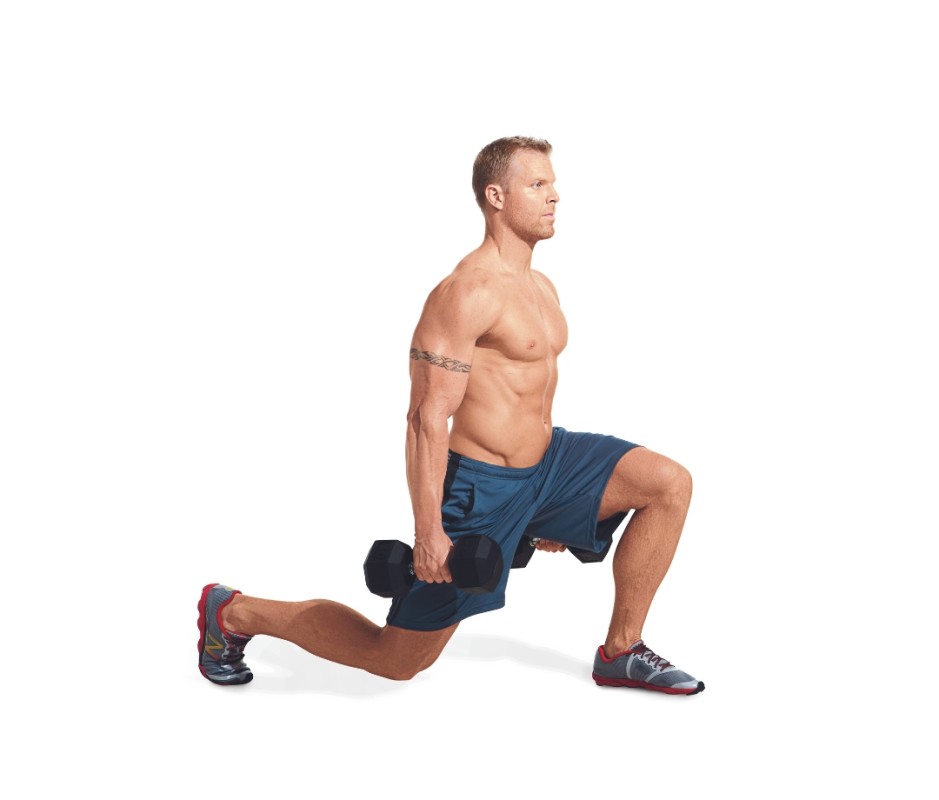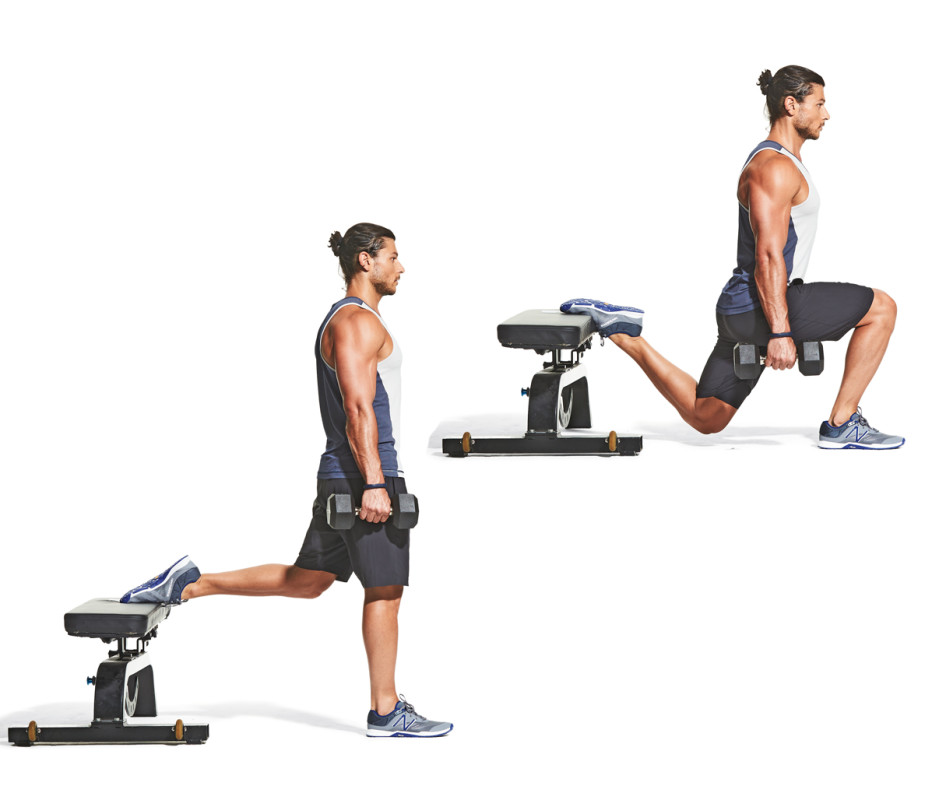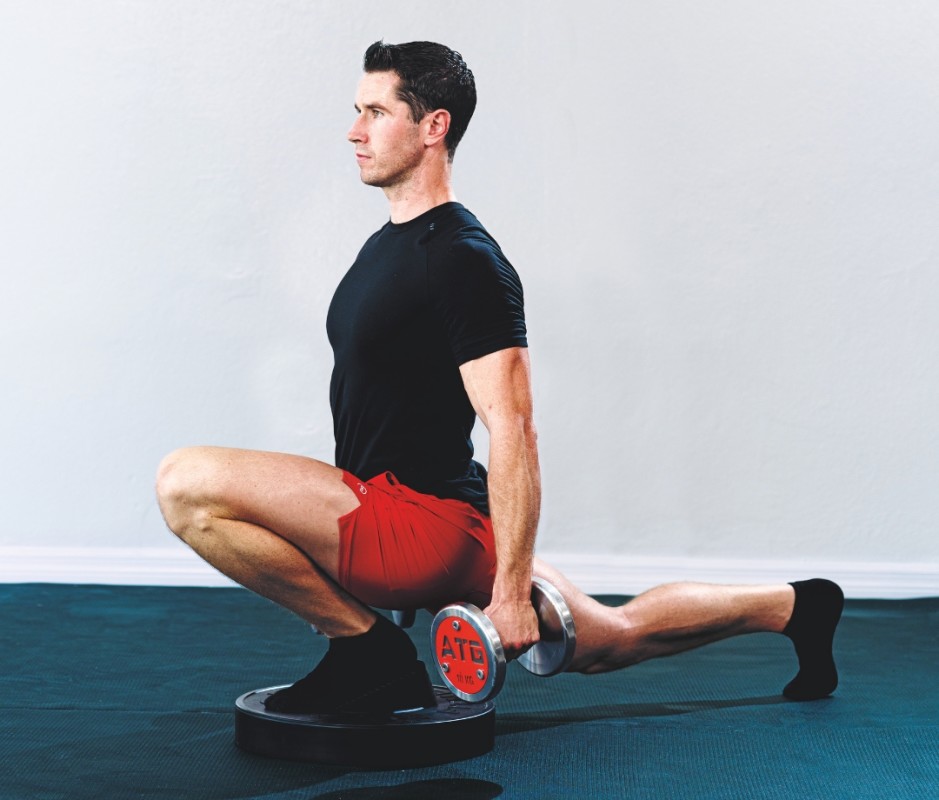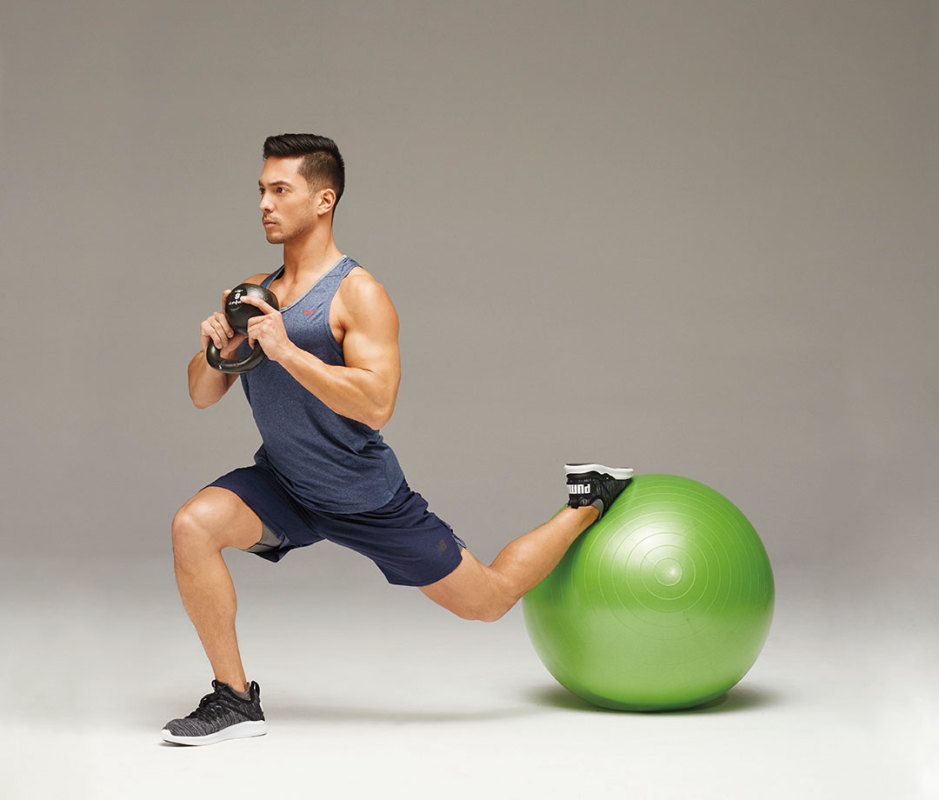Split Squat vs Lunge: Which Is Better for Gaining Size and Strength?
Ask the strongest man in the world what the best leg workout is to build strength and stability, and they’d probably say you need barbell back squats and deadlifts. But ask someone like Ben Patrick, Knees Over Toes Guy, and he’d point to the split squat. While back squats can help develop brute strength, there’s something to be said about a functional workout that focuses on longevity and quality of movement. In light of that, we’re focusing on the benefits of lunge exercises, and highlighting the difference between the split squat vs lunge and Bulgarian split squat vs lunge—riffs on a foundational movement.
For athletes just starting out, split squats can help build basic strength, coordination, and balance before advancing to more intense variations like reverse lunges and walking lunges, which are more demanding and dynamic, requiring a greater degree of balance and coordination. From here, you can further advance to Bulgarian split squats. This step-by-step approach builds stronger legs and creates a solid foundation for more advanced, goal-specific training.
Below we’ll show you how to perform each with perfect form, and the unique benefits. By the end, you’ll know the difference between split squat vs lunge and Bulgarian split squat vs lunge; how to incorporate these leg-day staples into your workouts; and learn advanced lunge variations.
Split Squat vs Lunge
The split squat and lunge might look similar—both use a split stance, working one leg at a time while emphasizing glutes, quads, hamstrings, and even some core stability. However, key differences affect how they load your muscles, joint stability, and overall workout outcome.
Split squats keep your feet stationary while lunges introduce a forward or backward step, which adds dynamic movement that requires more balance and control. When comparing the split squat vs lunge, the split squat focuses on isolated strength and stability, while lunges deliver a functional approach to lower-body training.
As noted, a lunge is more dynamic. You’ll typically step forward (or backward) with each rep, adding movement through the lower body while training stability and control as you balance through each step. Lunges are versatile, with variations like walking lunges, reverse lunges, or side lunges, each offering unique benefits and muscle emphasis.
Choosing between these exercises often depends on your fitness goals. Want to isolate muscles with control? Split squats are your friend. Looking to train for power and better coordination? Lunges can offer that dynamic edge. Read on to learn how to do a lunge and master split squat form.
Split Squat

Beth Bischoff
How to Do It
- Hold a dumbbell in each hand with your left foot behind you so you’re in a staggered stance, to start
- Bend both knees to drop into a lunge; they should make 90-degree angles.
- Drive through your feet to stand.
- That’s 1 rep.
Pro Tip
Keep your feet pointed forward and focus on moving straight up and down.
Lunge

Beth Bischoff
The lunge exercise adds dynamic movement, giving you a great option to train balance and coordination alongside strength.
How to Do It
- Start by standing tall with your feet hip-width apart and arms relaxed at your sides.
- Step forward with one leg, bending both knees to lower your back knee toward the ground.
- Aim for a 90-degree angle in both knees, keeping your front knee in line with your ankle.
- Keep your torso upright throughout, engaging your core to avoid leaning forward.
- Push through your front heel to rise and return your stepping leg to the starting position.
- That’s 1 rep.
- Alternate legs with each step for a forward lunge or step back for a reverse lunge.
Pro Tip
Try walking lunges for a full lower-body workout or reverse lunges to focus more on stability with reduced knee stress and hip-focused strength.
Bulgarian Split Squat vs Lunge
If you want an even more intense activation of your glutes, quads, and hamstrings, elevate your back foot to perform a Bulgarian split squat. This version not only works said muscles to a greater degree but also has an added stability challenge.
Bulgarian Split Squat

James Michelfelder
How to Do It
- To start, position yourself with one foot forward and the other foot behind in a staggered stance.
- Engage your core to keep your torso upright, ensuring stability.
- Lower yourself by bending both knees and dropping the back knee straight toward the floor to a 90-degree angle.
- Keep your weight focused on the front heel, engaging your quads and glutes.
- Pause briefly at the bottom, then push through the front heel to return to the start.
- That’s 1 rep.
Related: Push, Pull, Legs Program: Simple Regimen to Build Muscle
Benefits of Split Squats
Split squats are a fantastic tool for building leg and glute strength, especially when you want a controlled, stationary movement.
Isolated Leg Strength
Since split squats are stationary, they emphasize strength in a fixed position, allowing you to target the quads and glutes without as much need for coordination or balance as with a lunge.
Enhanced Muscle Activation
Variations like the Bulgarian split squat significantly activate the glutes, hamstrings, and quads, especially with the elevated foot, adding resistance. It’s an excellent go-to for hypertrophy.
Less Strain on the Knees
With controlled movement and focus on form, split squats are easier on the knees than lunges, making them safer for people with knee sensitivities.
Improved Mobility and Flexibility
The deep stretch on your back leg’s hip flexor promotes hip mobility, making split squats a great choice to enhance flexibility in your lower body.
Related: Master the 5×5 Workout to Build Strength, Muscle, and Power
Benefits of Lunges
Lunge exercises are one of the best moves for building functional strength. It engages the glutes, quads, hamstrings, and core while training balance and coordination. Variations like reverse lunges allow for reduced forward knee strain, making them ideal for those with knee sensitivities, while walking lunges give a full-body conditioning boost.
Lunges are more dynamic than the split squat because they not only require balance but coordination with the muscle groups in your legs, glutes, and core.
Increased Functional Strength
Lunges mimic everyday movements, like walking up stairs or getting up from a seated position, making them a highly functional exercise that improves daily strength.
Coordination and Balance
The forward or reverse movement of lunges engages stabilizer muscles and the core, training you to control your balance and coordination with each step.
Variety of Modifications
With options like walking, reverse, or side lunges, you can adjust this move to target different muscles or fit various workout goals. Reverse lunges are particularly beneficial for those with knee concerns, as they reduce forward knee stress.
Cardio Conditioning
Lunges in a series or circuit can increase your heart rate, serving as a cardio component while strengthening your lower body.
Improved Power
Training lunges with the intent of driving through the concentric phase (contracting your muscles as you rise) with speed will enhance lower body power.
Related: 15 Best Lunge Variations to Build Muscular Legs
The Main Takeaways
Split squats and lunges both offer unique benefits, but which you choose should align with your specific goals. Split squats (especially Bulgarian split squats) are invaluable for isolated strength and control. On the other hand, lunges are excellent for dynamic balance and functional strength. Integrating both exercises into your routine is your best bet if you want a leg workout targeting stability, mobility, and power.
Split Squat Variations
Whether you want to grow your legs, improve balance, or get a full lower-body workout, split squats can take your training to the next level. Once you advance, try these advanced split squat variations.
ATG Split Squat

Forrest Conner
How to Do It
- To start, place your left foot on a wedge atop a weight plate and step your right foot far back into an exaggerated split-squat position, heel lifted.
- Keep your chest tall and back straight as you bend your left knee to lower into a deep split squat.
- That’s 1 rep.
- Perform all reps on one side, then switch.
Swiss Ball Split Squat

Justin Steele
How to Do It
- Hold a light (15- to 20-pound) kettlebell beneath the chin.
- Start in a split-squat position, left foot back and top of foot on stability ball, right foot forward, a slight bend in right knee.
- Keeping chest high, drop left knee toward ground, then reverse for one rep.
- Do all reps with the right foot on the ball, then switch sides.

